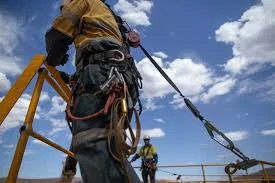


 349,500 Offered Certificates
349,500 Offered Certificates
 24/7 Online Training
24/7 Online Training
 Money Back Guarantee
Money Back Guarantee
 Fully Accredited Courses
Fully Accredited Courses

Created at: 22-02-2025 14:38
In today’s fast-paced work environments, ensuring safety for workers operating at heights is more critical than ever. The rise of technology has paved the way for innovative solutions that enhance training effectiveness and reduce workplace accidents. In this article, we’ll explore how advanced technologies like smart helmets, IoT sensors, AI-driven risk assessments, and virtual reality are revolutionizing Working at Heights training.
The traditional methods of safety training for workers at height have significant limitations, particularly in engaging trainees and providing real-time insights into safety performances. As workplaces evolve, so must the training methodologies employed to prepare workers for potential hazards. With the integration of modern technology, we can ensure not only compliance with safety regulations but also create a proactive safety culture.
Smart helmets are an exciting development in the construction and maintenance sectors, utilizing augmented reality (AR) to assist workers. These helmets come equipped with various features:
The Internet of Things (IoT) has made significant strides in redefining safety management. Sensors can be strategically placed throughout a worksite to:
Artificial intelligence is leading a new era in risk assessment. AI algorithms can analyze historical data to:
Virtual reality (VR) offers immersive training experiences, allowing workers to:
For businesses looking to enhance their Working at Heights training, the implementation of these technologies can be gradual and manageable:
The integration of technology into Working at Heights training is transforming how safety is approached in the workplace. Innovations like smart helmets, IoT sensors, AI-driven risk assessments, and virtual reality simulations not only enhance learning but significantly improve workplace safety by equipping workers with the tools they need to stay safe. Businesses should embrace these advancements to cultivate a safer working environment for their teams.
If you're ready to elevate your Working at Heights training program, consider exploring solutions that incorporate these cutting-edge technologies. Learn more about our Working at Heights Course or reach out to us at [email protected] for specialized training options tailored to your organization.